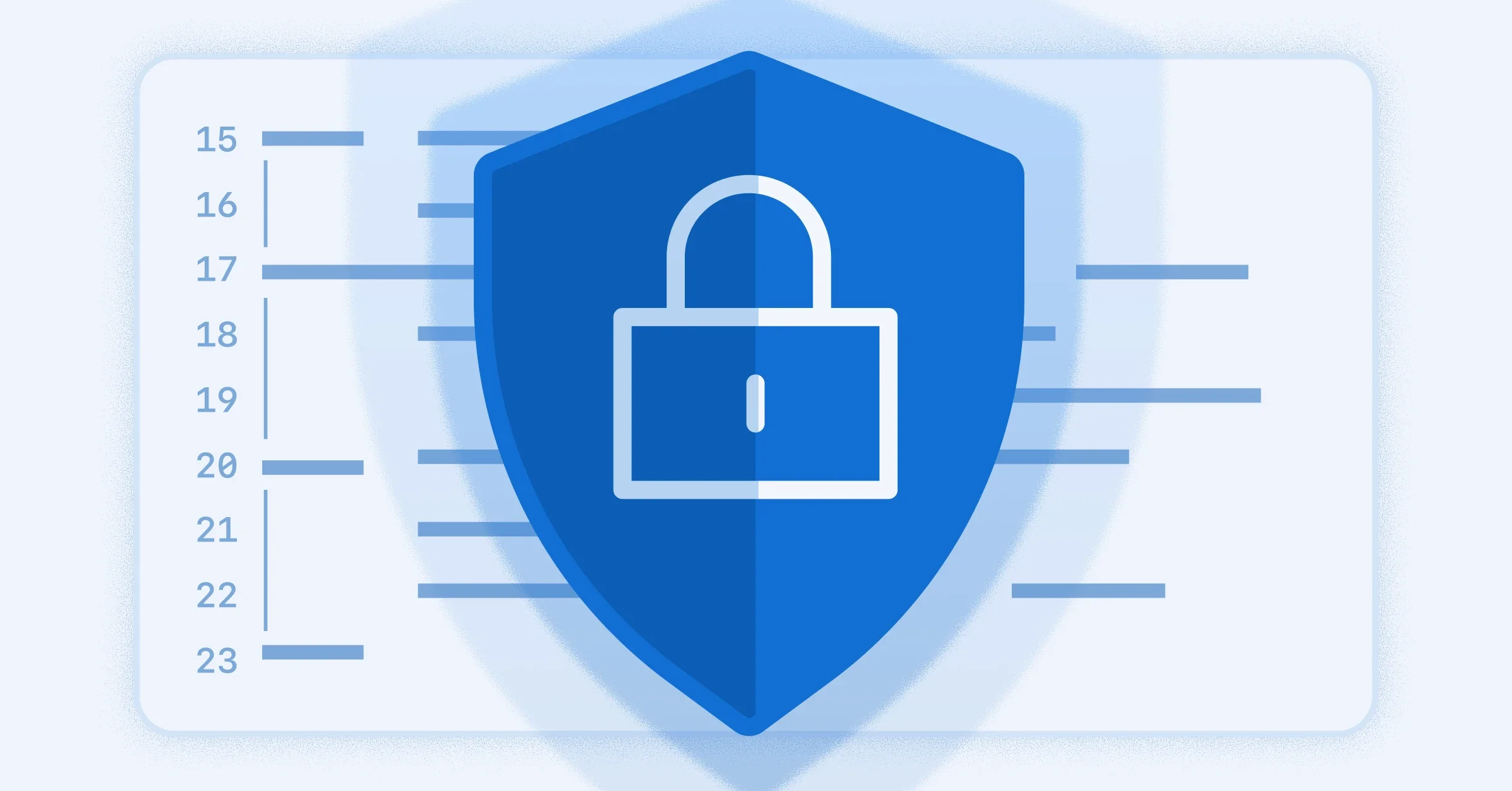What to know
Why application security can't wait
What does "static" in SAST actually mean?
What does a modern SAST tool detect?
The benefits of "shifting left" by building code security into your workflow
What are common challenges and limitations of SAST?
How Sonar Helps You Integrate SAST in your development workflows
🎧 Listen to a 2-minute summary of this article
The common perception is that a security vulnerability is a rare, complex attack pattern. In reality, the journey of most flaws begins much earlier and much more simply: as a code quality issue. For both developers and security practitioners, understanding this lifecycle is crucial to building secure, reliable, and maintainable software. A small inconsistency or a tiny lapse in coding is not just a future maintenance headache—it is a security blind spot waiting to be exploited.
The origin of a quality issue
Let's track a common problem. A developer is working on a feature and, under time pressure, implements a quick custom function for user input handling. Perhaps they skip using a library’s built-in, hardened validation routine in favor of something less tested.
At this stage, the issue is flagged as a code quality concern which quite often is ignored and left aside. The code works, it passes functional tests, and it might even look acceptable on the surface. But it is brittle, untested, and lacks the necessary defensive-coding best practices. It is not production-ready code.
This initial lapse is now critically amplified by the rapid adoption of AI coding assistants. While AI accelerates the generation of code volume, it can also subtly introduce non-standard patterns, inconsistencies, or even security vulnerabilities that are difficult to spot. The speed of AI generation makes it easy for a developer reviewing code to overlook a quality lapse in a large block of suggested code. This lack of scrutiny fuels the AI accountability crisis, where organizations lose visibility and control over whether all code human or AI-written adheres to enterprise standards for code quality and code security. Without real-time, expert guidance in the developer's integrated development environment (IDE) this sub-optimal code often gets merged.
Escalating into a security vulnerability
Months after the code is pushed into production, a threat actor discovers a novel attack vector, perhaps a specific type of encoding, or an unconventional input that the quick, custom function never accounted for. When the issue escalates, the security team's focus shifts from architectural review to exploit analysis. They don't see a "bad function"; they see a specific path of data flow that allows tainted input to reach a sensitive part of the application without proper sanitization. The security team's deliverable at this stage is a finding that states: A specific line of code is exploitable and presents a critical risk to data integrity or business operations. This sets in motion the next phase of the journey.
Phase I: Risk validation and triage
In this phase the security issue moves beyond simple detection. It's the phase of rigorously assessing the newly flagged issue to determine their genuine risk, confirm they are not false positives, and prioritize them for action. This ensures developers focus their time on the real problems that impact the software's security, quality, and maintainability, preventing low-quality or vulnerable code from ever progressing downstream.
- Confirm severity: The security team first verifies the SAST(Static Application Security testing) tool's finding, especially for complex issues like those identified by taint analysis. They confirm the tool correctly traced the unsecured path of the data (tainted input) from the source (e.g., user input field) to the sink (e.g., database query or file system command). This verification minimizes the noise from potential false positives and ensures the issue is a genuine exploit potential.
- Contextualize risk: They assign a definitive risk rating (e.g., Critical, High, Medium) based on several factors:
- Impact: What is the worst-case scenario (e.g., full system compromise, data breach)?
- Reachability: Is the vulnerable code easily accessible to an attacker (e.g., an exposed API endpoint versus an internal admin function)?
- Compliance: Does the vulnerability violate required industry standards (like OWASP Top 10 or PCI DSS)?
- Ticket creation: The confirmed vulnerability is logged, categorized, and assigned a specific owner, usually the original development team responsible for that service or repository.
Phase II: Remediation and enforcement
This phase closes the loop by transforming insight into action. Remediation and enforcement is about making the fix immediate, efficient, and consistent.
- Enforce quality gate: For high-risk findings that are part of a pending pull request (PR), the security tool's quality gate is used to automatically fail the build and prevent the insecure code from being merged. This ensures the issue is stopped at the point of creation.
- Coordinate the fix: The security team provides the development team with the full actionable code intelligence. This includes:
- A clear explanation of the vulnerability and its potential attack scenario.
- The exact line of code where the issue starts and where the dangerous operation occurs.
- Developer action: The responsibility then shifts to the developer. They go "back to the drawing board" to implement a fix that addresses the root cause—the failure in maintainable code or code quality. This usually involves refactoring the insecure function and implementing a hardened, defensible solution (e.g., using parameterized queries instead of string concatenation to prevent SQL injection).
The developer must analyze the initial technical debt, custom function and now view it through a security lens. The fix requires going beyond a simple patch; it demands a refactoring effort to ensure the code is not just secure against the known exploit, but is defensively robust against future, similar attacks. This often involves:
- Replacing the brittle code with a hardened, well-vetted library function.
- Implementing rigorous input validation and output encoding to eliminate the threat of injection or cross-site scripting.
- Using actionable code intelligence to guide the fix, ensuring the final code meets the enterprise standard for production-ready code.
Phase III: Verification and reporting
The final phase is essential for organizational governance and risk management. This is where the quality and security status of the entire application portfolio is continuously monitored against defined standards.
- Re-scan and verification: Once the developer submits the fix, the security tool re-scans the updated code. The security team verifies that the fix is comprehensive and that the original vulnerability is no longer detectable.
- Compliance reporting: For strategic purposes, security practitioners track the mean time to remediate (MTTR) for critical vulnerabilities. They use the tool's reporting features, such as those in SonarQube, to prove to leadership that the codebase is compliant with enterprise security policies, managing and continuously reducing risk exposure across the entire application portfolio.
The strategic risk is clear: a failure to enforce robust code health at the earliest phase has created a massive, system-wide liability. The issue was not a complex attack; the issue was code that was never defensively robust in the first place.
A “vibe, then verify” approach
The solution to stopping this recurring pattern is to merge the concepts of code quality and code security at the source. This is where actionable code intelligence provides the necessary guidance and guardrails for both teams.
For developers:
The goal is to provide immediate feedback where you work. This is where SonarQube for IDE acts as a real-time coach, flagging the custom, error-prone function as you write it.
- Real-time coaching in the IDE: SonarQube for IDE delivers real-time feedback seamlessly into the developer's favorite editors. It flags potential bugs, security issues, and quality flaws the moment code is written, ensuring you are improving code quality and security as you write.
- AI-driven fix suggestions: When issues are found, AI CodeFix (requires connected mode) leverages large language models (LLMs) to intelligently suggest code fixes with a single click, streamlining issue resolution and allowing developers to focus on interesting challenges.
- Comprehensive security feedback: You receive real-time analysis for both quality and security, including detection of hard-coded secrets and complex issues identified by taint analysis, ensuring issues are fixed when they are easiest and cheapest to address.
This shift empowers you to fix issues when they are easiest and cheapest to address, ensuring you are improving code quality and security as you write.
For security practitioners:
Your role shifts from late-stage firefighting to establishing automated, non-negotiable standards. You can build a "vibe, then verify" culture where code is continuously scrutinized by automated tools in the CI/CD pipeline, such as SonarQube.
- Assurance for AI code: The AI Code Assurance capability is an automatic verification process that subjects AI-generated code to a structured, comprehensive analysis. This ensures that AI-generated code meets the highest standards of quality and security before moving to production.
- Continuous enforcement with quality gates: SonarQubeacts as the central control plane, continuously scrutinizing all code—human-written, AI-generated, and open source. Customizable Quality Gates in the Continuous Integration/Continuous Deployment (CI/CD) pipeline automatically fail a build and prevent non-compliant code from being merged or deployed, serving as the final, non-negotiable guardrail.
- Integrated, comprehensive security: You gain consolidated visibility with a single platform that integrates core security tools: SAST, Secrets Detection, IaC Scanning , and Advanced Security, which extends protection to third-party dependencies using software composition analysis(SCA)and deeper taint analysis.
This provides the governance and reporting needed to prove compliance, and it acts as the final guardrail, ensuring code security by design. You move beyond simply blocking known vulnerabilities to proactively preventing quality issues that will inevitably become vulnerabilities down the line.
Reducing the security risk
Code quality and code security are fundamentally intertwined, operating as two sides of the same software-health-coin. A poorly written, difficult-to-understand piece of code significantly increases the probability of introducing and masking a security vulnerability. By merging code quality and code security into a single, integrated standard, organizations achieve two critical goals: they empower developers to maintain high quality standards for all code that they write, and they dramatically reduce operational risk by shifting vulnerability detection left to the point of creation. This unified approach transforms security from a bottleneck to a core part of the development process, empowering developers to maintain high standards and ensuring the entire codebase is trustworthy.
Get started with SonarQube Cloud.

